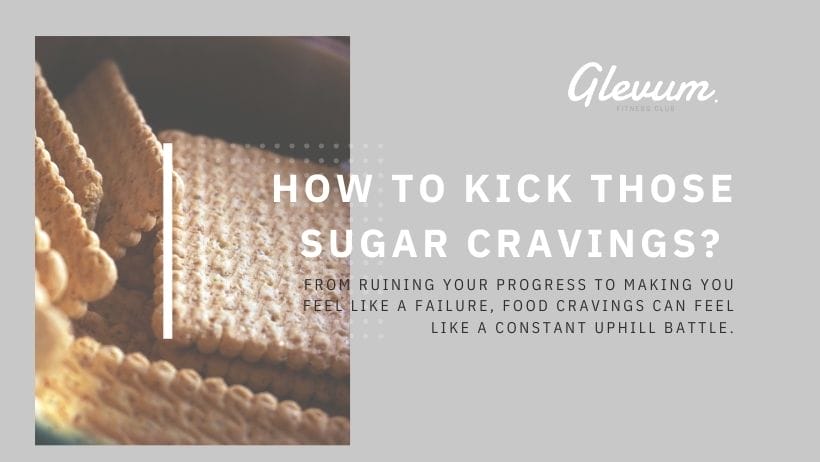From ruining your progress to making you feel like a failure, food cravings can feel like a constant uphill battle. how can you conquer them once and for all?
If this sounds like you, know that you are not alone! This is the number one struggle our clients report when they come to us for help!
Here are 5 of our favourite strategies to help kick those cravings once and for all.
Strategy #1: Give your craving a timeout.
Yes, the strategy traditionally used with willful toddlers can also work with Rocky Road.
Notice your snack urge, and sit with it for five minutes without taking action.
This isn’t about exercising willpower. It’s about pausing just long enough to let your conscious mind say, ‘Hey, I’m in charge here!’ This gives you the chance to evaluate all your options, and make a rational decision, rather than a reactionary one.
Are you actually hungry? Or are you bored or stressed or procrastinating?
Does a steak or baked potato sound good, or is it just those biscuits in the cupboard?
These are the kinds of questions you can ask yourself.
Granted, you may still decide to go ahead and indulge. After all, maybe you’re truly hungry. Or perhaps you’re just not having your best day. (Trigger alert.) And that’s okay.
Don’t consider this a failure.
In your efforts to break your cravings cycle, you won’t be perfect. Simply think of this as an opportunity to gather more data about your cravings, so you better understand them for next time. (And give yourself a pat on the back for taking five minutes.)
But here’s the really important part: You don’t have to choose between giving in to your cravings and depriving yourself.
There’s a space in between the two, and that’s where you can really break the cravings cycle.
Strategy #2: Choose an activity that doesn’t involve chewing.
What happens if you step away from the freezer and go for a walk, clean up your phone’s camera roll, make a new Spotify playlist or browse pinterest?
By immersing your mind or body in an activity long enough, you may run the urge all the way out of your system.
That’s because cravings are often psychological rather than physical.
And with the exception of very strong grief or trauma, intense feelings don’t usually last longer than 15 to 20 minutes. If you’re not really hungry, the craving will likely dissipate.
Have you ever been so involved in a project that you actually forget to eat lunch? Or the afternoon flies by, and you didn’t even think about a snack? Same concept, only this time, you’ll do it on purpose.
Once you sense a craving, choose an activity you can really dig into, such as:
- working on a project you’re passionate about
- cuddling/ playing with a pet
- crossing an item off of your daily to-do list
- getting outside for some fresh air
- calling a friend
- playing an instrument or video game
- colouring a page or two in a coloring book
- exercising, gardening, or cleaning

Remember, you’re looking to activate and occupy your mind and/or body. So, while different activities may work better for different people, watching TV probably won’t help (and in fact, is often a trigger).
Strategy #3: Try an experiment.
Hunger and cravings tend to come in waves, rising and falling throughout the day.
It helps to understand how this feels. That’s why we often suggest our healthy clients (those without any pre-existing health conditions) try a fasting experiment. For 24 hours, they don’t eat (they’re reminded to stay well hydrated, though). Although some are afraid they’ll be “starving all day long,” that’s not usually what happens.
Yes, they get hungry. Yes, they get cravings. But these feelings come and go, and for many people, this can be both eye-opening and empowering. In a sense, fasting forces them to “lean in” to urges, and accept “it’s okay to be hungry.”
Do they waste away? No.
Do they collapse from exhaustion? No.
Does the world end? No.
Again, this isn’t about testing your willpower or denying yourself. It’s about giving you a fresh perspective, and reducing the anxiety, discomfort, and urgency you feel the moment hunger or cravings arise. You are more powerful than your cravings allow you to think!
Strategy #4: Eat the right foods during the day.
Though cravings can happen any time of day, nighttime cravings and overeating are very common.
Our coaches don’t necessarily like to tell people exactly when or how many meals to eat. It’s okay whether you eat a couple of times a day or several, or if you have most of your food in either earlier in the day or later. So long as it’s working for you, it’s all fair game.
But over the years, we’ve discovered that those who overeat at night are often restricting their intake throughout the day—knowingly or unknowingly.
For example, they might be skipping breakfast and having a salad with little or no protein for lunch. By dinner, they could be making solid choices rich in fibre, protein, and healthy fats, but their appetite is already in overdrive. So it’s no wonder they’re feeling snacky before bed.
What you eat during the day matters. Not so much what you eat on any given day, but what you eat most days.
Fibre (especially from low-calorie vegetables) helps fill you up, and protein keeps you full longer between meals. This makes eating a combination of these nutrients, in sensible portions at regular intervals, key for regulating appetite.
Strategy #5: Indulge your cravings—under the following conditions.
Really craving a chocolate bar? Okay, have one. But choose a pricey, high-quality chocolate. Eat it slowly, and savour the experience. Though it seems counterintuitive, clients tell us they eat far less of the chocolate (or any craved food) this way. And research shows the same.
You can eat it, but you have to make it.
That’s right: Cake needs to be baked in the oven. Ice cream needs to freeze.
Sound ridiculously impractical? Sure, it does, and that’s the point.
It helps answer this question: How hungry are you, really? Besides, this is exactly what people have had to do for most of human history. (Sans the air fryer, of course.)
One important consideration for both of these strategies: They work a lot better if your kitchen kitchen and office desk aren’t full of ready-to-eat temptations.
If a food is in your house or possession, either you, someone you love, or someone you marginally tole


